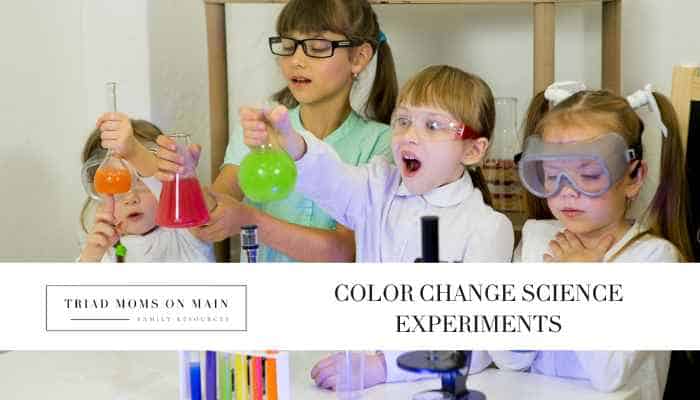Color change science experiments are a fun way to introduce young children to chemistry and color theory. Whether you’re at home on a rainy day or looking for an engaging classroom project, color science experiments offer endless opportunities for learning and fun. A simple setup using basic household items can provide hours of educational entertainment. Not only do these activities stimulate curiosity, but they also foster fine motor skills.
In addition to the educational benefits, color change science experiments are perfect for sensory play. The bright colors, combined with the tactile experience of using pipettes, create a multi-sensory environment that engages children on multiple levels. This type of play is particularly effective for young learners who thrive on hands-on activities.

Color Change Science Experiments Supplies
To get started with color science experiments, you’ll need a few simple supplies. We bought this Color Science Test Tubes Kit. You may already have some of these supplies in your home. Here’s what you’ll need:
- Food coloring
- Pipettes or droppers
- Small cups or bowls
- Water
- Milk
- Dish soap
- Shallow dish or plate
- Paper towels or coffee filters (for tie-dye art)
Color Change Science Experiments
These pipette activities for preschoolers are not only visually stimulating but also help reinforce critical thinking as children predict and observe the outcomes of their experiments. These activities captivate kids with vibrant transformations right before their eyes.
Montessori dropper activity
One of the most popular color change experiments involves exploring how different colors mix and change. This hands-on approach encourages kids to explore color mixing using pipettes and various liquids. Start by filling small cups with water and adding a few drops of different food coloring to each one. Hand your child a pipette and let them transfer drops of colored water between cups. They’ll love watching how the colors blend together to create new shades. They’ll develop coordination and concentration while learning the basics of color theory. It’s a simple yet effective way to engage their curiosity while they learn through play.
Food Color Science Experiment
Another simple yet effective experiment involves using milk, dish soap, and food coloring. Pour a small amount of milk into a shallow dish, add drops of different food colors, and then dip a pipette filled with dish soap into the milk. Watch as the colors swirl and dance across the surface, creating a mesmerizing display. This experiment teaches children about chemical reactions while allowing them to explore the effects of surface tension. It’s a perfect example of how pipette activities for preschoolers can be both educational and magical.
Food Color Art
For a creative twist, try using food coloring to make beautiful art. Begin by placing a coffee filter or paper towel on a flat surface. Then, allow your child to use a pipette to drop different colors of food coloring onto the paper. As the colors spread and mix, they’ll create vibrant patterns that resemble stained glass. This is not only a fun pipette activity for preschoolers but also a great way to introduce them to the concept of diffusion. Plus, once the paper dries, you’ll have a beautiful piece of art to display.
Food Color Tie-Dye
Another exciting project is creating food color tie-dye. To do this, fold or crumple a T-shirt, then secure it with rubber bands if desired. Using pipettes, your child can apply different food coloring to various sections of the fabric. As the colors bleed and mix, they’ll form a tie-dye effect that’s both fun to watch and beautiful to see. This activity encourages creativity and experimentation, making it a fantastic way to engage kids in science and art simultaneously. And because it’s so easy to set up, it’s perfect for a rainy day or an afternoon craft session.
Color science experiments are a wonderful addition to any home or classroom. By incorporating easy pipette play activities into your routine, you’re providing your child with a fun and effective way to develop fine motor skills, enhance their understanding of colors, and stimulate their creativity. Color science experiments, whether through art or play, are a wonderful way to introduce children to the fascinating world of science. By using simple supplies and engaging in these easy activities, you can help your child develop crucial skills while having a blast. So gather your supplies and get ready to dive into a world of color and discovery!
Want to see more blogs like this and get notifications on local events and happenings? Subscribe to our free weekly newsletters here.
Other Blogs You Might Like:
Outdoor Summer Activities & Games For Kids
Rainy Day Activities in the Triad
Engaging Activities to Do with Your Infant








